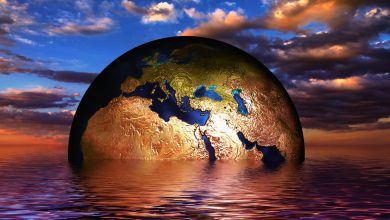Energy Sources in Sustainable Growth

The public and private sectors see entrepreneurship as the movement of active, creative people who seize opportunities under uncertainty, create new products and jobs, and contribute to the economic development of the region. On the other hand, entrepreneurs with a ‘new’ vision and agility play an important role in creating a sustainable future for everyone by overcoming social and environmental challenges.
There is no doubt that power reliability has increased in most countries of the world. Over the years, electric power has been used by smartphones, electronic gadgets, personal computers, etc. Beyond making public services a dominant and essential part of civilization. Energy losses must be minimized to meet the power demands of a growing economy. This should be done along the transmission and distribution lines, from power generation to the final load. In this section, renewable energy sustainable solutions and superconducting power applications as a possible solution for energy sustainability, sustainable and environmental impacts of superconducting technology are discussed with future trends. It promotes the smart grid and their role in sustainability.
In our society, where the appetite for various electrical smart devices increases with the high level of industrial production, the power produced must be transmitted efficiently to meet the needs of consumers. The electricity network serves as an intermediary network between power generation facilities and consumers. Power reaches its consumer in the following order:
- Generation
- High voltage transmission substation
- High transmission lines
- Primary distribution substation
- Secondary distribution substation
- Consumers
It is estimated that electricity demand in the United States will increase from 3.9 billion kWh in 2010 to 4.7 billion kWh in 2035. This enormous load increase causes a drastic overload on conventional aluminum or copper technology; The requirement to minimize inefficiency from overload can be met with superconducting power technology because it can carry large amounts of power in a small cross-sectional area. Closed circuit cryogenic application does not support heat loss to the external environment compared to traditional systems that have a direct heat loss effect on the environment. Moreover, due to its high energy per unit volume, superconducting applications are light and compact in contrast to traditional heavy systems made of copper.
Energy Sustainability
There are different sources of electrical energy that are grouped as renewable (wind, geothermal, solar and hydroelectric) and non-renewable (nuclear, coal, oil and natural gas) energy sources. Sustainable energy has become a necessity for humanity and it has a lot to do with renewable energy sources that can provide energy to this generation without wasting the natural resources needed for future generations. Many renewable resources such as wind, solar, hydroelectric and biomass generation have been explored to sustain power for the future. This section discusses various types of renewable energy as environmentally friendly sustainable energy sources. Currently, only 23.7% of global electricity production comes from renewable sources.
Biomass Energy Production
Biomass is obtained from forest waste, wood waste, agricultural waste and biomass raw materials. Biomass is considered a clean energy because it emits lower carbon dioxide compared to non-renewable energy sources. While the entire biomass energy production cycle is not completely CO free, harvest and transport biomass involve biogas and heat free biochemical and thermochemical processes, respectively. As of 2010, 4% of the energy used in the United States of America was obtained from biomass.
Hydroelectric Power Generation
This is the first generation renewable energy source and is the most commercialized renewable energy source. Hydroelectric power is generated by kinetic energy from high velocity water made to flow through a dam. The water turbine activates the speed control and in return drives the generator. From the source, the large HEPP is estimated to be as high as 95% in 2020; efficiency depends on turbine design, wave power, water volume and other conversion system limitations.
Solar Power Generation
This is the process of absorbing sunlight to be converted into electricity and is one of the solutions to minimize greenhouse gases as it does not emit CO2. The light produced by sunlight is absorbed by the solar panels and stored as direct current (DC) by an inverter before it is converted into alternating current (AC) electricity. One of the biggest disadvantages is that the peak period is daytime and in this case the energy must be stored during the peak period so that energy can be supplied during the off-peak period. PV cells convert solar energy into electrical energy with a conversion efficiency of approximately 15%.
Wind Power Generation
Wind generation involves the use of a wind turbine to convert the movement of air into electrical energy. The movement of air increases with altitude. The power generated depends on the efficiency of the system, the wind speed rotor blade design, the capacity of the storage systems and the air density. In a century where environmental pollution has had huge effects on our planet, such as global warming, there is an urge to go after cleaner energy gadgets. Considering the superconductivity in the electricity grid, solar energy and wind energy are the most used renewable energy sources.
Geothermal Energy Generation
Energy produced from heat on earth is called geothermal energy. This energy can be easily obtained as it can be found in different corners of our environment, whether in the landfill or on the top of the mountains. This energy is one of the clean and sustainable solutions to fossil dependence. The United States produced 15.918,000 MW in 2015 and is a state like California that produces 7% of the state’s electricity exothermically. One of the main sources of geothermal energy is under the earth’s crust where there is a constant layer of heat known as hot molten rock or magma. This layer has the highest underground temperature with seismically active zones that allow heat to pass through tectonic plate boundaries.
There are approximately three basic designs for a geothermal power plant, but the simplest is dry steam generation. This concept involves taking steam from the hot layer to the turbine and then a condenser converting the hot steam into the water that controls the turbine. The turbine drives the power generator. Unlike wind and solar energy, geothermal energy is available all year round; The geothermal energy cost is 3.6 cents / kWh compared to 5.5 cents / kWh for coal.





